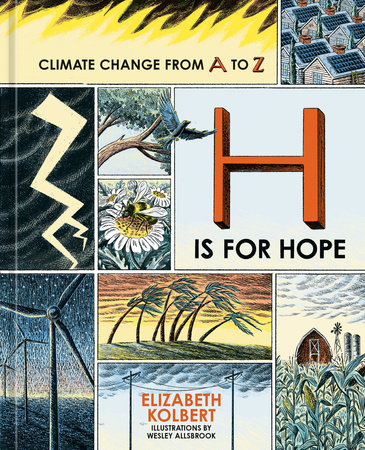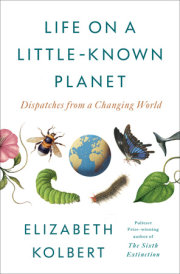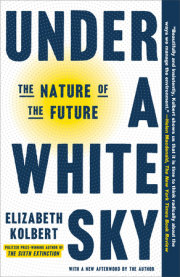ArrheniusSvante Arrhenius was, by nature, an optimist. He believed that science should—and could—be accessible to all. In 1891, he got his first teaching job, at an experimental university in Stockholm called the Högskola. That same year, he founded the Stockholm Physics Society, which met every other Saturday evening. For a fee of one Swedish crown, anyone could join. Among the society’s earliest members was a Högskola student named Sofia Rudbeck, who was described by a contemporary as “an excellent chemist” and “a ravishing beauty.” Arrhenius began writing her poetry, and soon the two wed.
Physics Society meetings consisted of lectures on the latest scientific developments, many delivered by Arrhenius himself. These were followed by discussions that often lasted well into the night. The topics ranged widely, from aeronautics to volcanology. The society devoted several sessions to considering the instruments that would be needed by Salomon August Andrée, another early member of the group, who had decided to try to reach the North Pole via balloon. (Whatever the quality of his instruments, Andrée’s voyage would result in his own death and the death of his two companions.)
A question that particularly interested the Physics Society was the origin of the ice ages. All over Sweden lay signs of the glaciers that had, for vast stretches of time, buried the country: rocks with parallel scrapings; strange, sinuous piles of gravel; huge boulders that had been transported far from their source. But what had caused the great ice sheets to descend, carrying all before them? And then what had caused them to retreat, allowing the rivers to flow once again and the forests to return? In 1893, the society debated various theories that had been proposed, including one linking the ice ages to slight variations in the Earth’s orbit. The following year, Arrhenius came up with a different—and, he thought, better—idea: carbon dioxide.
Carbon dioxide, he knew, had curious heat-trapping properties. In the atmosphere, it allowed visible light to pass through, but it absorbed the longer-wave radiation that the Earth was constantly emitting to space. What if, Arrhenius speculated, the amount of CO2 in the air had varied? Could that explain the glaciers’ ebb and flow?
The math involved in testing this theory went far beyond what was possible at the time. Arrhenius didn’t have a calculator, let alone a computer. He lacked crucial information about which wavelengths, exactly, CO2 absorbs. The climate system, meanwhile, is immensely complicated, with feedback loops nestled within feedback loops.
Arrhenius, who would later win a Nobel Prize for an unrelated discovery, plunged ahead anyway. On Christmas Eve, 1894, he began constructing a climate model—the world’s first. He assembled temperature data from around the globe and made ingenious use of a set of measurements that had been taken a decade earlier by an American astronomer, Samuel Pierpont Langley. (Langley had invented a device—a bolometer—for gauging infrared radiation and had used it to determine the temperature of the moon.) Arrhenius performed thousands of computations—perhaps tens of thousands—and often labored over this task for fourteen hours a day. He was still calculating away as his marriage fell apart. In September of 1895, Rudbeck moved out. In November, without having seen Arrhenius again, she gave birth to their son. The following month, Arrhenius finished his work.
“I should certainly not have undertaken these tedious calculations if an extraordinary interest had not been connected with them,” he wrote.
Arrhenius believed that he had unravelled the mystery of the ice ages, a riddle that had “hitherto proved most difficult to interpret.” He was at least partly right: ice ages are the product of a complex interplay of forces, including wobbles in the Earth’s orbit and changes in atmospheric CO2.
His model turned out to have another use as well. All across Europe and North America, coal was being shovelled into furnaces that were bellowing out carbon dioxide. By thickening the atmospheric blanket that warmed the Earth, humans must, Arrhenius reasoned, be altering the climate. He calculated that if the amount of carbon dioxide in the air were to double, then global temperatures would rise between three and four degrees Celsius. A few quadrillion computations later, vastly more advanced climate models predict that doubling CO2 will push temperatures up between 2.5 and four degrees Celsius, meaning that Arrhenius’s pen-and-paper estimate was, to an uncanny degree, on target.
Arrhenius thought that the future he had conjured would be delightful. “Our descendants,” he predicted, would live happier lives “under a warmer sky.” The prospect was, in any event, distant; doubling atmospheric CO2 would, he reckoned, take humanity three thousand years.
It’s easy now to poke fun at Arrhenius for his sunniness. The doubling threshold could be reached within decades, and the results of this are apt to be disastrous. But who among us is really any different? Here we all are, watching things fall apart. And yet, deep down, we don’t believe it.
Copyright © 2024 by Elizabeth Kolbert. All rights reserved. No part of this excerpt may be reproduced or reprinted without permission in writing from the publisher.















